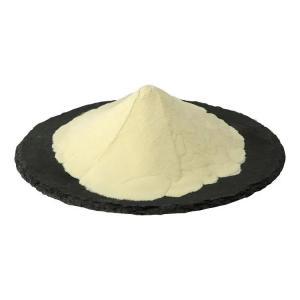Buy Food Grade Phospholipids,Physiological Function and Nutrition Enhancement
Time:2024-12-27Phospholipids are the primary components of biological membranes and serve multiple physiological functions in food. Their nutritional value can be enhanced through fortification strategies. Below is a detailed explanation of the physiological functions of phospholipids in food and strategies for their nutritional fortification.
I. Physiological Functions of Phospholipids in Food
1. Maintaining Cell Membrane Structure
Phospholipids are essential components of cell membranes, playing a critical role in maintaining the integrity and stability of the membrane. The cell membrane serves as a channel for material exchange between the intracellular and extracellular environments and as a protective barrier for cells. Phospholipids help preserve the normal physiological functions of cells.
2. Regulating Fat Metabolism
Phospholipids play an important role in fat metabolism. They facilitate the breakdown and metabolism of fats, preventing excessive fat accumulation in the body. This contributes to weight management and obesity prevention.
3. Preventing Cardiovascular Diseases
Phospholipids can lower serum cholesterol and triglyceride levels, reducing lipid deposition on blood vessel walls and thus preventing cardiovascular diseases. Additionally, they improve blood circulation and support the health of the cardiovascular system.
4. Promoting Brain Development and Function
Phospholipids are vital components of brain nerve cells and significantly impact brain development and function. They promote the growth and development of neural cells, enhance signal transmission efficiency, and thereby improve memory and cognitive abilities.
5. Antioxidant Properties
Phospholipids have antioxidant properties that can delay the oxidation process in food, extending shelf life. They also help protect cells from oxidative damage, maintaining cellular health.
II. Nutritional Fortification Strategies for Phospholipids
1. Increasing Phospholipid Content in Food
By incorporating phospholipid-rich ingredients such as egg yolk, soybeans, pork liver, and beef into food, the phospholipid content can be increased. These ingredients are not only rich in phospholipids but also provide additional nutrients like proteins, vitamins, and minerals, enhancing the nutritional value of food.
2. Using Phospholipid Additives
Phospholipids can be used as emulsifiers, stabilizers, or antioxidants in food processing to improve food stability and texture. These additives also help enhance the bioavailability and absorption of nutrients in the food.
3. Optimizing Food Processing Techniques
Adjusting processing parameters such as temperature, time, and pH during food production can maximize the retention of phospholipids in food. Advanced techniques like microencapsulation and embedding can be employed to encapsulate phospholipids in microcapsules or particles, improving their stability and bioavailability in food.
4. Developing Phospholipid-Rich Functional Foods
Functional foods rich in phospholipids can be developed to meet the specific nutritional needs of target groups. For example, low-fat, low-sodium, and low-sugar phospholipid-enriched foods can be tailored for elderly individuals or cardiovascular disease patients. Similarly, brain-boosting foods rich in phospholipids can be designed for children and adolescents. These functional foods provide not only nutritional value but also specific health benefits.
Phospholipids play multiple physiological roles in food and can enhance nutritional value through various fortification strategies. By fully leveraging these characteristics during food processing and production, healthier and more nutrient-rich food options can be provided to consumers.


 CN
CN





